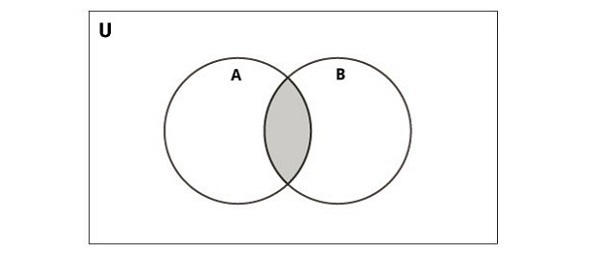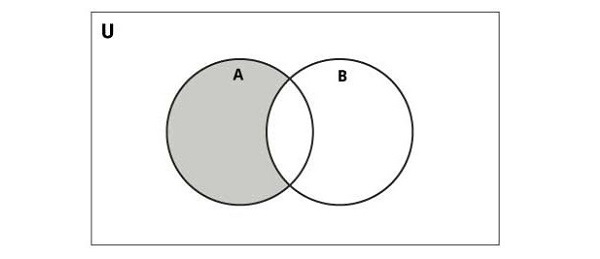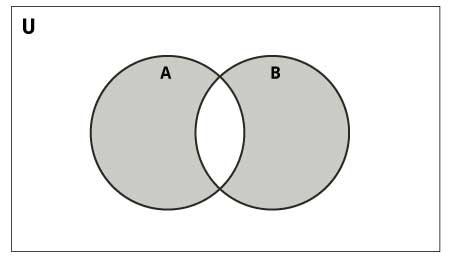
- Python 基礎
- Python - 首頁
- Python - 概述
- Python - 歷史
- Python - 特性
- Python vs C++
- Python - Hello World 程式
- Python - 應用領域
- Python - 直譯器
- Python - 環境搭建
- Python - 虛擬環境
- Python - 基本語法
- Python - 變數
- Python - 資料型別
- Python - 型別轉換
- Python - Unicode 系統
- Python - 字面量
- Python - 運算子
- Python - 算術運算子
- Python - 比較運算子
- Python - 賦值運算子
- Python - 邏輯運算子
- Python - 位運算子
- Python - 成員運算子
- Python - 身份運算子
- Python - 運算子優先順序
- Python - 註釋
- Python - 使用者輸入
- Python - 數字
- Python - 布林值
- Python 控制語句
- Python - 控制流
- Python - 決策
- Python - if 語句
- Python - if else
- Python - 巢狀 if
- Python - match-case 語句
- Python - 迴圈
- Python - for 迴圈
- Python - for-else 迴圈
- Python - while 迴圈
- Python - break 語句
- Python - continue 語句
- Python - pass 語句
- Python - 巢狀迴圈
- Python 函式與模組
- Python - 函式
- Python - 預設引數
- Python - 關鍵字引數
- Python - 僅限關鍵字引數
- Python - 位置引數
- Python - 僅限位置引數
- Python - 可變引數
- Python - 變數作用域
- Python - 函式註解
- Python - 模組
- Python - 內建函式
- Python 字串
- Python - 字串
- Python - 字串切片
- Python - 修改字串
- Python - 字串連線
- Python - 字串格式化
- Python - 跳脫字元
- Python - 字串方法
- Python - 字串練習
- Python 列表
- Python - 列表
- Python - 訪問列表項
- Python - 修改列表項
- Python - 新增列表項
- Python - 刪除列表項
- Python - 迴圈遍歷列表
- Python - 列表推導式
- Python - 排序列表
- Python - 複製列表
- Python - 合併列表
- Python - 列表方法
- Python - 列表練習
- Python 元組
- Python - 元組
- Python - 訪問元組項
- Python - 更新元組
- Python - 解包元組
- Python - 迴圈遍歷元組
- Python - 合併元組
- Python - 元組方法
- Python - 元組練習
- Python 集合
- Python - 集合
- Python - 訪問集合項
- Python - 新增集合項
- Python - 刪除集合項
- Python - 迴圈遍歷集合
- Python - 合併集合
- Python - 複製集合
- Python 集合運算子
- Python - 集合方法
- Python - 集合練習
- Python 字典
- Python - 字典
- Python - 訪問字典項
- Python - 修改字典項
- Python - 新增字典項
- Python - 刪除字典項
- Python - 字典檢視物件
- Python - 迴圈遍歷字典
- Python - 複製字典
- Python - 巢狀字典
- Python - 字典方法
- Python - 字典練習
- Python 陣列
- Python - 陣列
- Python - 訪問陣列項
- Python - 新增陣列項
- Python - 刪除陣列項
- Python - 迴圈遍歷陣列
- Python - 複製陣列
- Python - 反轉陣列
- Python - 排序陣列
- Python - 合併陣列
- Python - 陣列方法
- Python - 陣列練習
- Python 檔案處理
- Python - 檔案處理
- Python - 寫入檔案
- Python - 讀取檔案
- Python - 檔案重新命名和刪除
- Python - 目錄
- Python - 檔案方法
- Python - OS 檔案/目錄方法
- Python - OS 路徑方法
- 面向物件程式設計
- Python - OOPs 概念
- Python - 類與物件
- Python - 類屬性
- Python - 類方法
- Python - 靜態方法
- Python - 建構函式
- Python - 訪問修飾符
- Python - 繼承
- Python - 多型
- Python - 方法重寫
- Python - 方法過載
- Python - 動態繫結
- Python - 動態型別
- Python - 抽象
- Python - 封裝
- Python - 介面
- Python - 包
- Python - 內部類
- Python - 匿名類和物件
- Python - 單例類
- Python - 包裝類
- Python - 列舉
- Python - 反射
- Python 錯誤與異常
- Python - 語法錯誤
- Python - 異常
- Python - try-except 塊
- Python - try-finally 塊
- Python - 丟擲異常
- Python - 異常鏈
- Python - 巢狀 try 塊
- Python - 使用者自定義異常
- Python - 日誌記錄
- Python - 斷言
- Python - 內建異常
- Python 多執行緒
- Python - 多執行緒
- Python - 執行緒生命週期
- Python - 建立執行緒
- Python - 啟動執行緒
- Python - 執行緒連線
- Python - 執行緒命名
- Python - 執行緒排程
- Python - 執行緒池
- Python - 主執行緒
- Python - 執行緒優先順序
- Python - 守護執行緒
- Python - 執行緒同步
- Python 同步
- Python - 執行緒間通訊
- Python - 執行緒死鎖
- Python - 中斷執行緒
- Python 網路程式設計
- Python - 網路程式設計
- Python - 套接字程式設計
- Python - URL 處理
- Python - 泛型
- Python 庫
- NumPy 教程
- Pandas 教程
- SciPy 教程
- Matplotlib 教程
- Django 教程
- OpenCV 教程
- Python 雜項
- Python - 日期與時間
- Python - 數學
- Python - 迭代器
- Python - 生成器
- Python - 閉包
- Python - 裝飾器
- Python - 遞迴
- Python - 正則表示式
- Python - PIP
- Python - 資料庫訪問
- Python - 弱引用
- Python - 序列化
- Python - 模板
- Python - 輸出格式化
- Python - 效能測量
- Python - 資料壓縮
- Python - CGI 程式設計
- Python - XML 處理
- Python - GUI 程式設計
- Python - 命令列引數
- Python - 文件字串
- Python - JSON
- Python - 傳送郵件
- Python - 擴充套件
- Python - 工具/實用程式
- Python - GUIs
- Python 高階概念
- Python - 抽象基類
- Python - 自定義異常
- Python - 高階函式
- Python - 物件內部
- Python - 記憶體管理
- Python - 元類
- Python - 使用元類進行超程式設計
- Python - 模擬和存根
- Python - 猴子補丁
- Python - 訊號處理
- Python - 型別提示
- Python - 自動化教程
- Python - Humanize 包
- Python - 上下文管理器
- Python - 協程
- Python - 描述符
- Python - 診斷和修復記憶體洩漏
- Python - 不可變資料結構
- Python 有用資源
- Python - 問答
- Python - 線上測驗
- Python - 快速指南
- Python - 參考
- Python - 速查表
- Python - 專案
- Python - 有用資源
- Python - 討論
- Python 編譯器
- NumPy 編譯器
- Matplotlib 編譯器
- SciPy 編譯器
Python 集合運算子
Python 集合運算子
Python 中的集合運算子是特殊的符號和函式,允許你對集合執行各種操作,例如並集、交集、差集和對稱差集。這些運算子提供了一種組合、比較和修改集合的方法。
Python 使用以下集合運算子實現它們:
Python 集合並集運算子 (|)
兩個集合的並集是一個包含 A 或 B 或兩者中所有不同元素的集合。例如,
{1,2}∪{2,3}={1,2,3}
下圖說明了兩個集合的並集。

在 Python 中,你可以使用union() 函式或| 運算子執行並集操作。此操作組合兩個集合的元素,同時消除重複項,從而產生一個包含來自兩個集合的所有唯一元素的新集合:
示例
以下示例使用 "|" 運算子和 union() 函式,並返回兩個集合的並集:
set1 = {1, 2, 3}
set2 = {3, 4, 5}
set3 = {6, 8, 9}
set4 = {9, 45, 73}
union_set1 = set1.union(set2)
union_set2 = set3 | set4
print ('The union of set1 and set2 is', union_set1)
print ('The union of set3 and set4 is', union_set2)
執行上述程式碼後,我們將得到以下輸出:
The union of set1 and set2 is {1, 2, 3, 4, 5}
The union of set3 and set4 is {73, 6, 8, 9, 45}
Python 集合交集運算子 (&)
兩個集合 A 和 B 的交集,用 A∩B 表示,包含 A 和 B 中共有的所有元素。例如,
{1,2}∩{2,3}={2}
下圖說明了兩個集合的交集。

Python 提供intersection() 函式或& 運算子來執行此操作。結果集合僅包含兩個集合中都存在的元素:
示例
以下示例使用 & 運算子和 intersection() 函式,並返回兩個集合的交集:
set1 = {1, 2, 3}
set2 = {3, 4, 5}
set3 = {6, 8, 9}
set4 = {9, 8, 73}
intersection_set1 = set1.intersection(set2)
intersection_set2 = set3 & set4
print ('The intersection of set1 and set2 is', intersection_set1)
print ('The intersection of set3 and set4 is', intersection_set2)
它將產生以下輸出:
The intersection of set1 and set2 is {3}
The intersection of set3 and set4 is {8, 9}
Python 集合差集運算子 (-)
兩個集合的差集(減法)包含存在於第一個集合中但不存在於第二個集合中的元素。其定義如下。集合 A−B 包含在 A 中但不包含在 B 中的元素。例如,
If A={1,2,3} and B={3,5}, then A−B={1,2}
下圖說明了兩個集合的差集:

Python 提供difference() 函式或- 運算子來執行此操作。結果集合包含第一個集合中獨有的元素:
示例
以下示例使用 "-" 運算子和 difference() 函式,並返回兩個集合的差集:
set1 = {1, 2, 3}
set2 = {3, 4, 5}
set3 = {6, 8, 9}
set4 = {9, 8, 73}
difference_set1 = set1.difference(set2)
difference_set2 = set3 - set4
print ('The difference between set1 and set2 is', difference_set1)
print ('The difference between set3 and set4 is', difference_set2)
我們將得到如下所示的輸出:
The difference between set1 and set2 is {1, 2}
The difference between set3 and set4 is {6}
請注意,“s1-s2”與“s2-s1”不同。
Python 集合對稱差集運算子
兩個集合的對稱差集包含存在於任一集合中但不存在於兩個集合中的元素。A 和 B 的對稱差集用“A Δ B”表示,定義為:
A Δ B = (A − B) ⋃ (B − A)
如果 A = {1, 2, 3, 4, 5, 6, 7, 8} 且 B = {1, 3, 5, 6, 7, 8, 9},則 A Δ B = {2, 4, 9}。
下圖說明了兩個集合之間的對稱差集:

Python 提供symmetric_difference() 函式或^ 運算子來執行此操作。結果集合包含每個集合中獨有的元素。
示例
以下示例使用 "^" 運算子和 symmetric_difference() 函式,並返回兩個集合的對稱差集:
set1 = {1, 2, 3}
set2 = {3, 4, 5}
set3 = {6, 8, 9}
set4 = {9, 8, 73}
symmetric_difference_set1 = set1.symmetric_difference(set2)
symmetric_difference_set2 = set3 ^ set4
print ('The symmetric difference of set1 and set2 is', symmetric_difference_set1)
print ('The symmetric difference of set3 and set4 is', symmetric_difference_set2)
產生的結果如下:
The symmetric difference of set1 and set2 is {1, 2, 4, 5}
The symmetric difference of set3 and set4 is {73, 6}
Python 子集測試操作
你可以使用issubset() 函式或<= 運算子檢查一個集合是否為另一個集合的子集。如果集合A 的所有元素也存在於集合B 中,則集合A 被認為是集合B 的子集:
示例
以下示例使用“<=”運算子和issubset()函式,並返回兩個集合的子集測試結果:
set1 = {1, 2}
set2 = {1, 2, 3, 4}
set3 = {64, 47, 245, 48}
set4 = {64, 47, 3}
is_subset1 = set1.issubset(set2)
is_subset2 = set3 <= set4
print ('set1 is a subset of set2:', is_subset1)
print ('set3 is a subset of set4:', is_subset2)
產生的結果如下:
set1 is a subset of set2: True set3 is a subset of set4: False